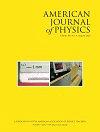在 Excel 上可视化非绝热量子动力学和光激发过程
IF 0.8
4区 教育学
Q3 EDUCATION, SCIENTIFIC DISCIPLINES
引用次数: 0
摘要
我们提供了两个 Excel 模块,学生可以用它们来查看当两条不同的核势能曲线在空间上相互交叉或被光场耦合时,二原子分子核的实时空间演变。模块 1 包括三个电子表格,可用于查看两条交叉核势能曲线上的非绝热核动力学。这些曲线交叉是因为存在一个空间坐标值,其中两条曲线具有相同的能量,从而导致概率密度从一条势能曲线交叉到另一条势能曲线的概率不为零。学生可以查看涉及两条无界核势曲线的非绝热核动力学、从结合 "离子态 "到非结合共价态的预解离,以及两条有界势曲线之间的量子隧道动力学。模块 2 包括两个电子表格,可用于查看光激发过程的动力学,即光的吸收导致两个核电势之间的转变。当光由连续波激光器和脉冲激光器提供时,学生可以模拟光引起的核电势之间的跃迁。这些模块作为补充材料提供,可在任何支持 Excel 的计算机上运行。本文章由计算机程序翻译,如有差异,请以英文原文为准。
Visualizing non-adiabatic quantum dynamics and photo-excitation processes on Excel
We offer two Excel modules that students can use to view the real-time spatial evolution of a diatomic molecule's nuclei when two different potential energy curves governing the nucleus motion spatially cross one another or are coupled by a light field. Module 1 comprises three spreadsheets that can be used to view non-adiabatic nuclear dynamics on two crossing nuclear potential energy curves. These curves cross because there is a value of the spatial coordinate where the two curves have the same energy, which results in a non-zero probability of the probability density crossing from one potential curve to the other. Students can view non-adiabatic nuclear dynamics involving two unbounded nuclear potential curves, pre-dissociation with a bound “ionic state” to an unbound covalent state, and quantum tunneling dynamics between two bounded potential curves. Module 2 comprises two spreadsheets that can be used to view the dynamics of the photo-excitation process, i.e., where the absorption of light leads to transitions between two nuclear potentials. Students can model the light-induced transitions between nuclear potentials when the light is provided by both a continuous wave laser and a pulsed laser. These modules are included as the supplementary material and can be run on any computer that supports Excel.
求助全文
通过发布文献求助,成功后即可免费获取论文全文。
去求助
来源期刊

American Journal of Physics
物理-物理:综合
CiteScore
1.80
自引率
11.10%
发文量
146
审稿时长
3 months
期刊介绍:
The mission of the American Journal of Physics (AJP) is to publish articles on the educational and cultural aspects of physics that are useful, interesting, and accessible to a diverse audience of physics students, educators, and researchers. Our audience generally reads outside their specialties to broaden their understanding of physics and to expand and enhance their pedagogical toolkits at the undergraduate and graduate levels.
 求助内容:
求助内容: 应助结果提醒方式:
应助结果提醒方式:


